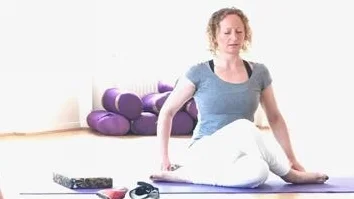Dancers' Pose
Dancers’ Pose
As ‘Strictly’ fever sweeps the nation, and we move from Len’s famous ‘sev-en’ into the nines’s and 10’s, the celebrities start to look like real dancers. But what makes a dancer’s posture so distinguishable? We asked ex-dancer Jeni Howland – now Somatics and yoga teacher – to shed some light on this question.
That poise and elegance that a dancer has, comes from years of training the body, but here’s a selection of hacks for getting the graceful glide of Anton or Oti:
The Grace of a Swan
Like a swan who glides effortlessly across the water, hiding the rapidly paddling feet under the surface, having the ability to appear calm and at ease is an essential skill of any dancer. To master this, you simply need to breathe! Using the diaphragm to inhale deeply and slowly into the bottom of the lungs and then controlling a smooth and steady exhale will calm the nerves, release tension across the whole body, and after a few breaths you’ll look ready to waltz with Bruno or Darcey.
Posture
Sitting up straight sounds so simple but we all have the habit of slumping or slouching. Taking time to do a few slow shoulder shrugs and shoulder rolls several times through your day will bring your attention to where you’re holding tension in your back/neck/shoulders and where you can let it go. The movement encourages blood flow and stimulates the respiratory system too keeping you alert. Before you know it, you will have that length through the spine that the judges often remark on.
Release Tension
We all hold tension and as we go through the day. We flinch and frown and shrink and shrug in response to what is going on around us. If we don’t release these reflexes, they show up in our wrinkles, tight shoulders, headaches and back aches. Noticing where you are holding yourself in a contracted position and then noticing where you are able to release tension will improve your poise. Habitual tension ends up manifesting as hunched shoulders, tight hips and ultimately pain. This can be reduced and reversed with simple movement practices that focus on controlling functional movement.
Smile
Dancers are great at putting on a show and making you want to smile and dance along with them. Did you know that if you smile for just 8 seconds you can trick your brain into thinking you’re happy! The feedback loop in the brain says, “I’m happy therefore I smile, and I smile therefore I’m happy!” and after a short period of time it isn’t sure which one happened first, and the happy hormones get released anyway! So if you’re not feeling all that elegant and charming, then fake it ‘til you make it!!
At 18, after badly injuring her back during dance training, Jeni’s career as a dancer was over, but she built herself back up again (albeit very gingerly) and still has a career in movement. Having taken part in very few dance classes since then, Jeni still feels and sees herself “as” a dancer. In fact, she is often get asked if she is a dancer – nearly 20 years since her injury! It is her posture and movement that makes people recognise her as a dancer. She focuses now on Somatic Movement. This is a movement therapy that enables you to practice the art of controlled movement and releasing held tension throughout the body. In a Somatic class you work through exercises that explore where you have control and where you can find beneficial alignment in order to build strength and flexibility that is efficient and pain-free. Classes focus on beneficial alignment, pain-free movement, breathing techniques, releasing tight muscles and strengthening weak muscles.
One of Jeni’s client’s comments: “The way I catch myself sitting and standing when I’m not even aware of it is quite a remarkable change from when I first came (to Somatic Movement Therapy). I never knew it was possible to retrain the body and mind like this. Thanks so much for your help Jeni!”






